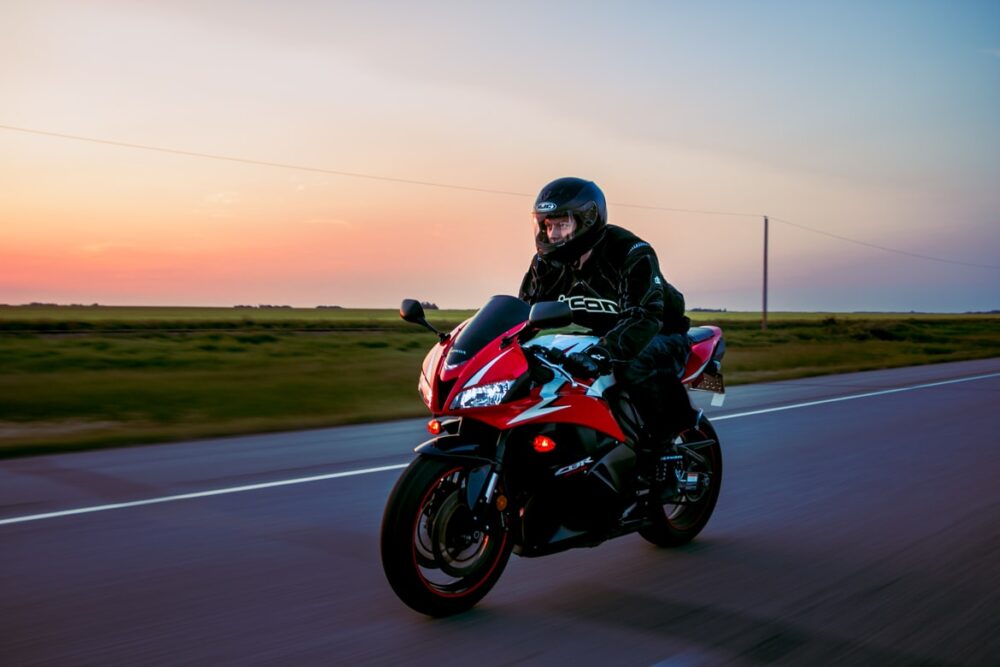The Complete Guide to Motorcycle Safety

There’s no denying the enjoyment that comes from being on your motorcycle. But there’s no getting away from the fact that it comes with higher levels of danger than travelling by car.
From another driver pulling into your path to potholes in the road, there are, according to claimsaction.co.uk, a whole heap of causes of motorcycle accidents.
However, that doesn’t mean that your bike needs to be relegated to the garage. That’s because, in this article, we’re going to look at the key elements to ensuring that your time on your motorcycle is safe and incident-free.
Wear The Right Gear
This can’t be stressed enough. The right motorcycle gear is essential to reducing the potential damage involved in the event of a crash. So, you need to invest time and money to ensure that you’ve got a high-quality helmet, boots, jackets, and gloves, all of which will keep you protected if something goes wrong.
Don’t forget that helmets are not for life. While most manufacturers recommend a replacement after five years, some state that it should be just three years of use before a new one is needed.
If you need any further evidence about the need to buy a top-quality helmet, then it’s worth considering that research in the US indicates that in 2017, helmets saved the lives of 1,870 motorcyclists. Sadly, more than 750 additional lives could have been saved if the motorcyclists had worn helmets.
Keep Your Motorcycle Well maintained
It may seem obvious, but ensuring your motorcycle is well maintained will help reduce the chances of you having an accident. That means changing the oil and filters at regular intervals, and it also means carrying out a complete service to make sure that everything is working perfectly before you go on a long ride.
As well as checking all the moving parts, it’s essential that your brakes are in perfect condition too. This is because braking problems are one of the leading causes of motorcycle accidents. By spending time checking them yourself or getting them checked by a professional, if necessary, you can be confident that they’ll work when you need them to most.
Select The Right Motorcycle for Your Needs
Unless you’re an experienced rider, then it’s worth keeping away from the more powerful bikes. That’s because these bikes are more likely to be dangerous if you lose control.
Picking the right type of motorcycle is also essential. For instance, if you’re going to be carrying heavy luggage or a passenger, then you’ll need a bike that is still easy to handle even with the additional load weight. By doing your research before making your purchase, you can pick something that will suit not only your needs but also the terrain in which you’ll be riding it most often.
Don’t Ignore Your Own Weaknesses
Many of us like to think we’re invincible, but the fact remains that everyone has weaknesses and blind spots where their motorcycling skills are concerned. So, whether it’s poor eyesight, not being able to steer correctly with your left hand or just general clumsiness, you must recognise what those weaknesses are and work hard to minimise them.
Practice Safe Riding Techniques
In addition to knowing and recognising your weaknesses, it’s also essential that you learn and practise safe riding techniques. Some of the critical situations that can pose potential dangers include:
Intersections
Intersections are the location of so many accidents. Cars jumping the lights and bikes setting off before the traffic has fully cleared is a combination for disaster. Just because the lights are green, it doesn’t mean that you can set off without checking that your path is clear.
Passing Other Vehicles
It’s essential to make sure you’re passing other vehicles safely. The best way to do this is to use your indicators and look over your shoulder every time you want to switch lanes or move position on the road. It’s not worth arriving at your destination a few minutes earlier, but having only achieved that by placing yourself in dangerous situations during the journey.
Turning
When turning, many riders focus so much on getting around the corner successfully that they don’t check their blind spots. As a result, they pull out into the path of another vehicle without realising there was any potential danger. By constantly checking your mirrors and blind spots, you’ll minimise this risk significantly.
Maintain A Space Cushion
You can’t control what other drivers are going to do – all you can do is minimise the risk of them causing an accident. So, by keeping a space cushion between you and other drivers, cyclists, and pedestrians on the road, you can be confident that they’ll have somewhere to go if you suddenly find yourself in their path.
Understand How Your Motorcycle Handles and Reacts to Different Situations
It’s easy to think of motorcycles as simply being bikes with an engine. But they’re complex machines that handle very differently depending on their weight, power and speed. That means it’s essential you understand how each type of bike will react when faced with different terrains or obstacles like ruts or potholes.
By understanding what your bike is likely to do when faced with any given situation, you can avoid accidents and collisions by predicting what will happen before it takes place.
Talk To Other Riders and Ask for Advice
If you don’t know much about motorcycles, you should always ask for advice. Join clubs, talk to fellow riders and seek the advice of other people who work in the bike industry. This way you can find out everything that there is to know about motorcycle safety and ensure the next trip on your bike is enjoyable and incident-free.





